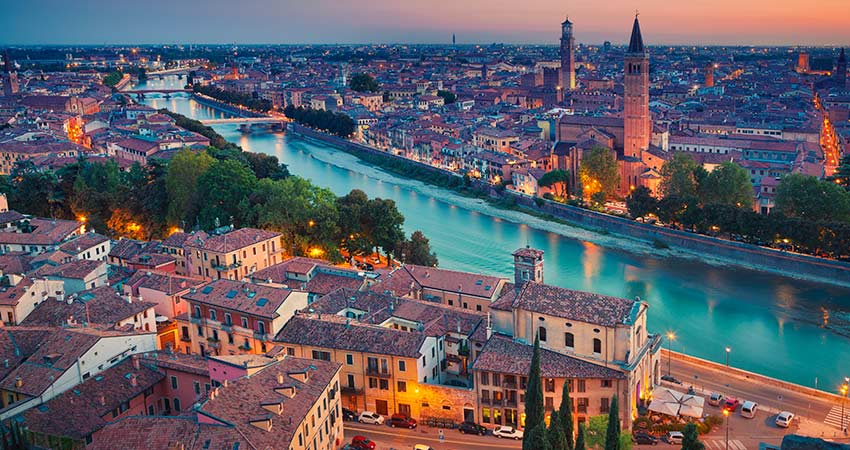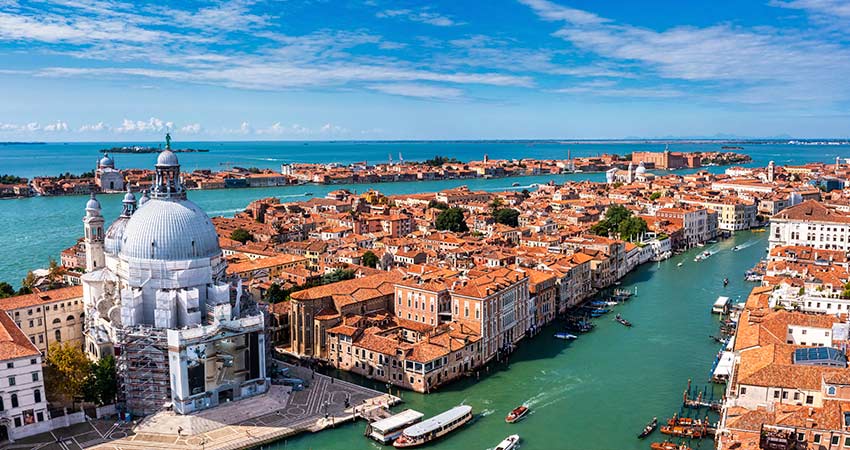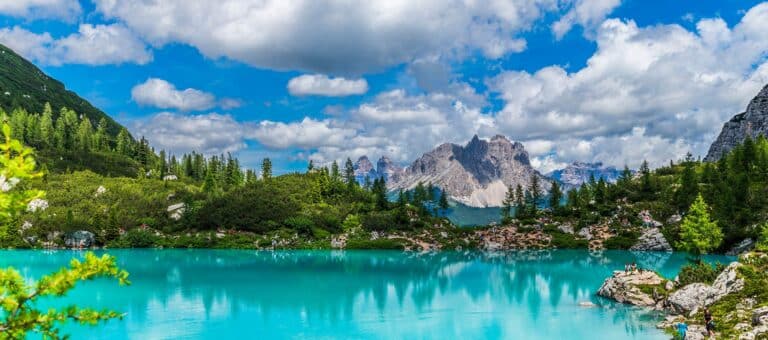When you choose to visit Italy, you’re saying YES to life! This is the country with glorious piazzas, lush hills covered with vineyards and olive groves, turquoise seas, busy ports, magnificent mountains, and the language of love. Of course, Western Civilization also blessed this country with Renaissance art, medieval villages, mind-boggling frescoes, riotous gardens, and azure lakes.
Italy has more UNESCO World Heritage Sites than anywhere else in the world. The following are some of the most sensational places, graced with the culture and natural wonders that gave them UNESCO status.
Botanical Garden (Orto Botanico), Padua
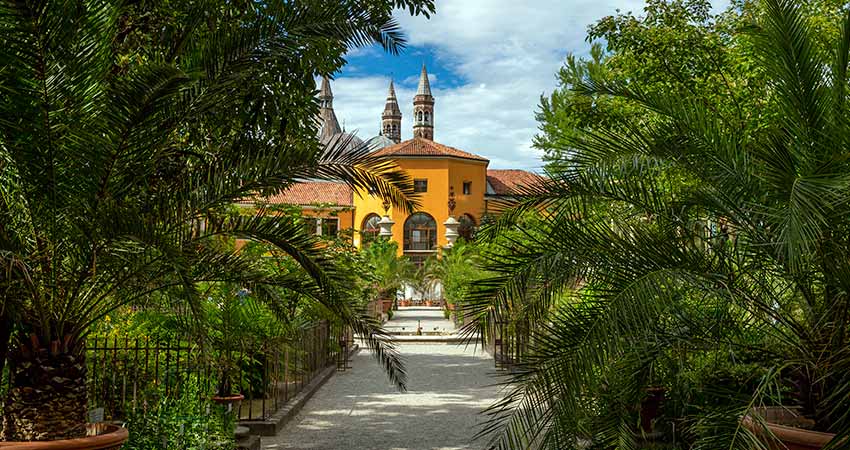
In the Veneto and Friuli Region, Padua is rich in both architecture and art. The Basilica di Sant’Antonio is an exceptional beauty, and a sacred spot of pilgrimage. But its Botanical Gardens is what gives it UNESCO standing. In 1545, the world’s first botanical garden was created in lovely Padua. When you visit, you’ll see its original layout. The circular plot, surrounded by water, represents the world.
Over time, ornamental additions were added, as well as pumps and greenhouses. But the Botanical Garden still serves the purpose that was intended 600 years ago: It is a center to study the science of plant biology and ecosystems.
The City of Verona
This city of Romeo and Juliet, founded in the 1st century B.C., flourished in the 13th and 14th centuries under the Scaliger family, and then in the 15th – 18th centuries as part of the Republic of Venice. Situated in northern Italy, Verona’s architecture reflects the evolution of a fortified town over a period of 2,000 years. First developed in the 4th century BC, it rose to importance 300 years later and was then occupied by Charlemagne in 774 AD.
The center of Verona is made up of a Roman town tucked into a river bend. It has one of the finest collections of Roman remains in northern Italy, including an amphitheater and the Roman theater. During the Middle Ages, the town was expanded, and a wall was built around it. One of the most prosperous cities in Northern Italy, the pink limestone, winding lanes, a castle, cathedral, and ruins make Verona a must-visit during your UNESCO Italy travels.
City of Vicenza and the Palladian Villas of the Veneto
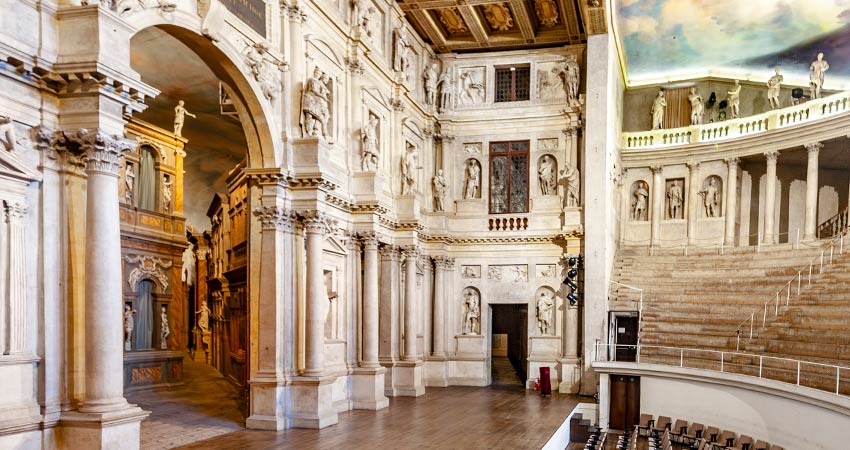
Also in Northern Italy, Vicenza was founded in the 2nd century BC. Palladio. A stonecutter, escaped his harsh employer and within a few decades changed the look of European architecture. A self-taught man, he created exceptional buildings that combine the warmth of country manors with sophisticated style, as well as classic lines and wild innovation. It’s his genius that gave this area its UNESCO Site designation. Twenty-four buildings, plus his adopted city of Vicenza, and 21 villas located in outlying provinces are included in the site.
Andrea Palladio, 1508-1580, applied his designs to urban and country dwellings alike. Basing his work on classical Roman architecture, he then let his imagination take flight, creating a movement that is reflected not only in architecture but in art history. While in the Veneto region, but particularly in Vicenza, take time to admire his magnificent work.
Historic Center of Florence
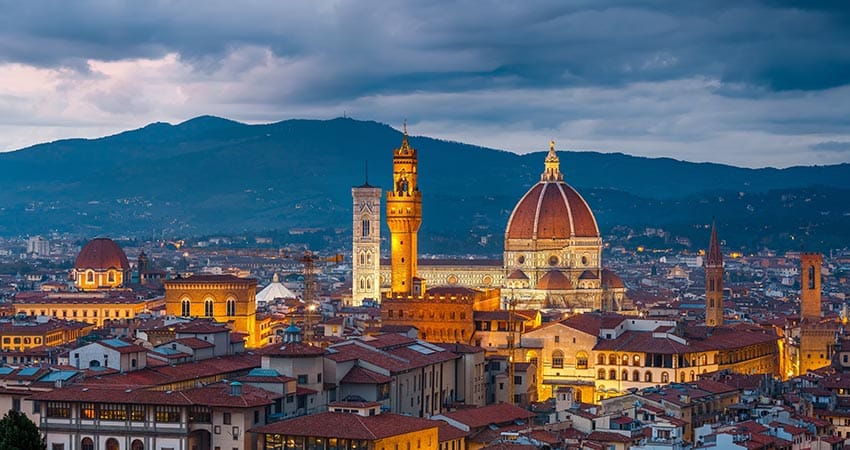
Florence, in the Florence and Tuscany Region, is a seductive city where life is sweet. World-class art, architecture, and cuisine fill your senses—the entire historic center is a UNESCO World Heritage Site. Built on the site of an Etruscan settlement, and then the Roman ‘Florentia’ in 59 BC, Florence came into its own during the Medici family’s prominence in the 15th and 16th centuries.
This Tuscan city is a treasure trove, showcasing 700 years of cultural and artistic works. While you’re in Florence, take time to discover the Uffizi and Pitti Palace and the works of masters such as Giotto, Brunelleschi, Botticelli, and Michaelangelo. The Arno River runs through the city, and several bridges connect its banks, including Ponte Vecchio and Ponte Santa Trinita. The entire city center is a unique marriage of museums, churches, architecture, and art. Dare to be dazzled!
Historic Center of Siena
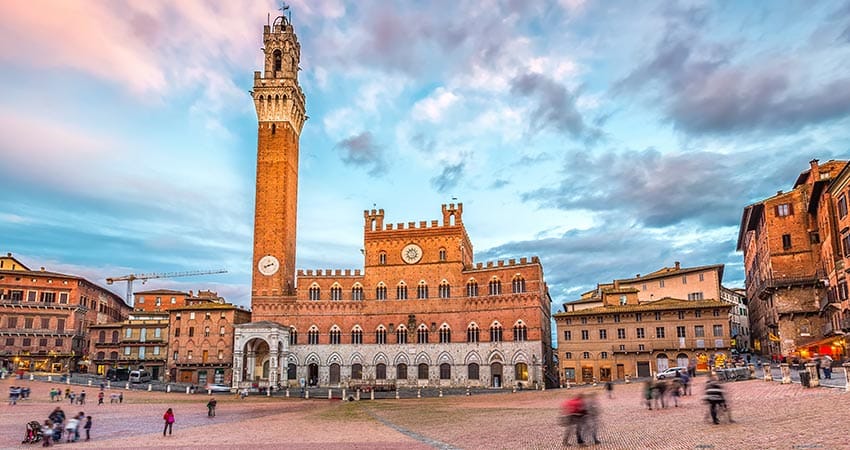
According to UNESCO, “The historic center of Siena is a testimony to human creativity and expresses human artistic and aesthetic capacity in material form.” That’s a lot to live up to, but as the embodiment of a medieval city, it’s an absolute success. Over time, people and politics came and went, but the city’s Gothic appearance, created during the 12th through the 15th centuries, has endured.
Siena was built around the Piazza del Campo and conceived of as a work of art that seamlessly blends with the landscape. Siena is also the perfect base to go wine and cheese tasting, bicycling through vineyards, orchards, past country farms, and back into town. Heavenly views abound in Siena.
Medici Villas and Gardens in Tuscany
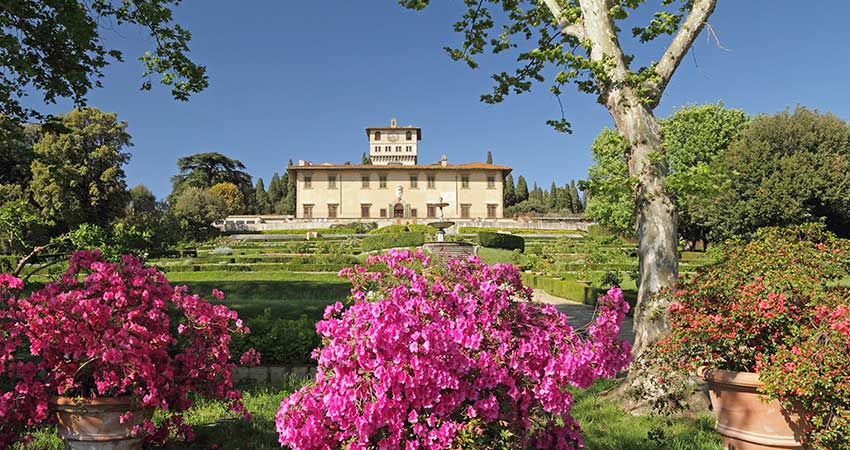
The Medici Family was unrivalled in terms of power, control, and patronage of the arts throughout Tuscany. Today, twelve villas situated in Tuscany are a testament to the family that exerted its influence over European culture between the 15th and 17th centuries. They are constructed in a manner that blends harmoniously with the land. These baronial castles heralded the end of the Middle Ages. Here, life was dedicated to leisure, the arts, and gaining knowledge.
Residences of the Royal House of Savoy
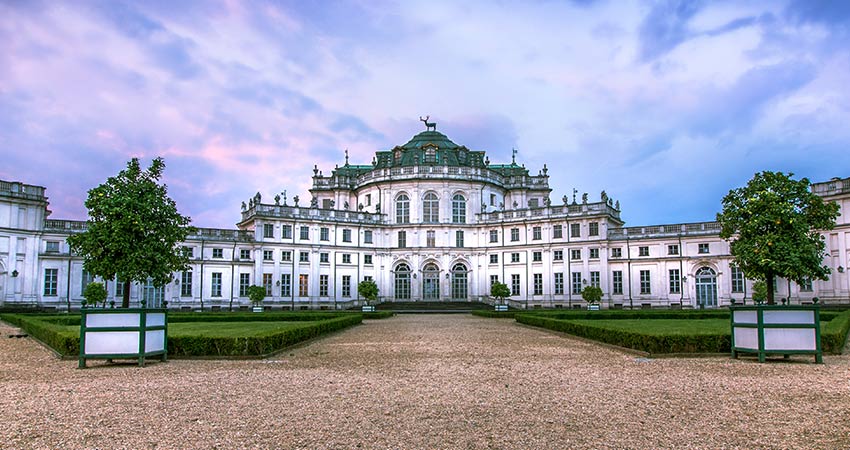
Northwestern Italy is a slice of heaven, and Piedmont’s capital, Turin, is an elegant gem of Baroque palaces, art, and fabulous cuisine. When the Duke of Savoy moved his center to Turin in 1562, he began projects that would illustrate the power of his own ruling family. This enterprise was continued by his successors. There are 22 estates, villas, country houses, and hunting lodges, designed by the leading artists and architects of the time. All of them flow out from the town center to the countryside.
The Residences of the Royal House of Savoy is an outstanding example of town planning and Baroque architecture of the 17th and 18th century. Turin is an ideal base. Head south, and you’ll come to the Italian Riviera. Go north, and you’re in the Italian Alps and a very different sort of culture.
Venice and its Lagoon
Imagine a place that inspired Titian, Tintoretto, Veronese, and Giorgione… all masters of luscious color and light. This is the effect Venice has had on people for thousands of years. Founded in the 5th century, and spread out over 118 little islands, Venice in its entirety is a miracle. The lagoon here has one of the highest concentrations of masterpieces in the world. Visiting Venice, particularly during a festival, is a mysterious dream come true.
Costiera Amalfitana—The Amalfi Coast
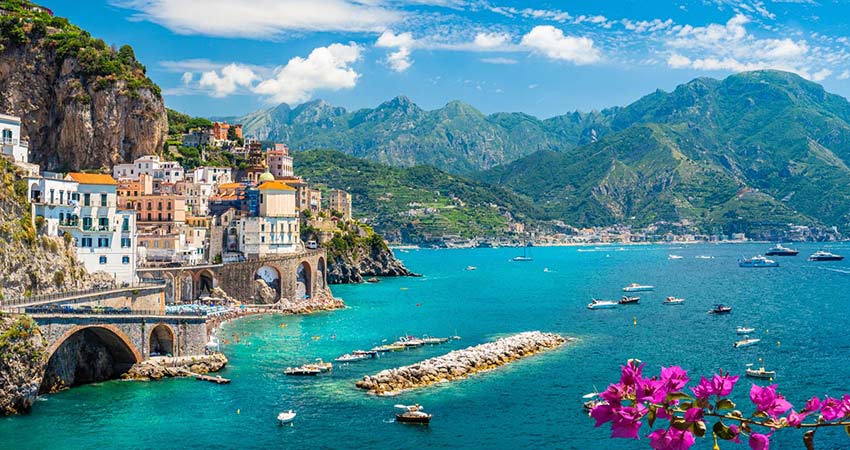
The Amalfi Coast is an area of outstanding culture and natural beauty. There are many instances of its art and architecture that are a perfect fusion of eastern and western influences, a reflection of the Amalfi Sea Republic from the 9th to 11th centuries. People have lived here since prehistoric times, and the area around Positano is filled with Mesolithic and Paleolithic remains.
The towns here, including Sorrento, Positano, Amalfi, and Ravello, are a siren’s call to mythic beauty as is the Isle of Capri. In the countryside, people have adapted to the land which varies from terraced vineyards and orchards to wide pastures. Use the Amalfi Coast as your travel base, and you’ll have easy access to 15 towns, gorgeous coasts and beaches, farm lands, and three natural reserves.
People have created art and beauty in this magnificent country for thousands of years. The land is an inspiration for dreamers of all sorts, from every part of the world. Put Italy’s cultural UNESCO World Heritage Sites on your travel bucket list, and you’ll have the vacation of a lifetime.
Let your Destination Expert know that you want to experience a cultural landscape like no other… Italy!


